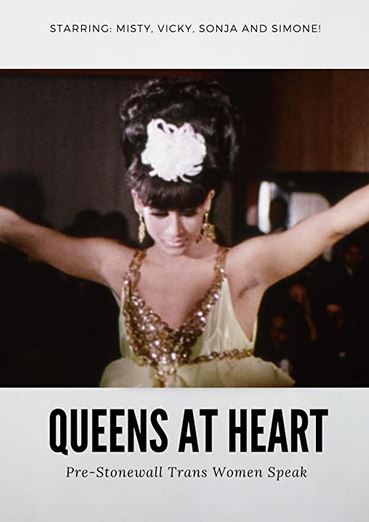Release Year: 1967
Synopsis:
In 1967, several years before the landmark Stonewall Uprising of 1969 that catalyzed the modern LGBTQ rights movement, filmmaker Nikolai Ursin created the 8-minute documentary "Behind Every Good Man...". This quietly powerful short film offers a rare, nuanced portrayal of an African-American transgender woman, providing a snapshot of a life that was seldom depicted with such authenticity or compassion during that era.
Produced at a time when transgender individuals were often misrepresented in popular media—especially by Hollywood, which predominantly portrayed them through negative and hostile stereotypes—Ursin’s film stands out as an exception. It presents its subject in a light that is not only positive but also hopeful, grounded, and well-adjusted.
At its core, "Behind Every Good Man..." is an intimate portrait of the daily life of a Black trans woman. It’s a glimpse into her world that challenges the conventional narratives of the time. The film was produced while Ursin was pursuing his Master of Fine Arts (MFA) at UCLA, and it blends a mix of observational footage, staged tableaux, and narrative voiceover. Through this approach, Ursin creates a tender yet poignant exploration of the subject’s life, portraying her as a woman of strength and dignity, not a victim or a spectacle.
The documentary’s portrayal of the African-American trans experience is notable not only for its rare insight into transgender life but also for its cultural context. In the mid-20th century, Black and queer communities often experienced heightened discrimination, with race and gender non-conformity intersecting to compound societal challenges.
This intersectionality is crucial to understanding the significance of "Behind Every Good Man...", as it offers a rare lens through which to view the lived experience of a Black transgender woman, both within the context of her gender identity and her racial background.
While transgender people in the 1960s were largely invisible in mainstream media, or worse, misrepresented through harmful stereotypes, Ursin’s film offers a striking contrast. Rather than emphasizing victimhood or exploitation, "Behind Every Good Man..." presents its subject with respect and dignity, capturing her humanity in a way that was revolutionary for its time. The film's careful, non-judgmental portrayal of the subject's life stands as a testament to Ursin’s pioneering vision, offering an alternative narrative to the one that Hollywood and mainstream society often perpetuated.
In the decades since its release, "Behind Every Good Man..." has remained a powerful and rare artifact of its time. It is a valuable cultural document that provides a glimpse into the lives of both transgender individuals and African-Americans in the U.S. during the 1960s, a period when civil rights movements and LGBTQ activism were both emerging but were still distinct and separate struggles.
This documentary predates the 1969 Stonewall Uprising, an event that would go on to serve as a rallying cry for the LGBTQ rights movement, making Ursin’s film an early, pre-Stonewall artifact of activism in its own right.
Thanks to preservation efforts, "Behind Every Good Man..." has been carefully restored by the UCLA Film & Television Archive as part of the Outfest UCLA Legacy Project. The restoration process, which included the preservation of three 16mm prints and the creation of a new 16mm preservation negative, was funded by the National Film Preservation Foundation. This work ensures that the film remains available for future generations to appreciate and study. The restored film features both an updated soundtrack and new 16mm prints, making it a timeless piece of history. The contributions of preservationists like Stephen Parr and Norman Yonemoto were instrumental in ensuring that this rare work would survive for decades to come.
Ultimately, "Behind Every Good Man..." remains an essential document in the history of LGBTQ cinema. It provides a window into the life of a Black trans woman in a way that was almost entirely absent in mainstream media at the time, offering a vital counter-narrative to the prejudice and ignorance surrounding transgender and Black identities. Ursin’s film serves as both a historical artifact and an important reminder of the power of film as a tool for social change, shedding light on marginalized lives long before the wider society was ready to listen.
In conclusion, "Behind Every Good Man" is a groundbreaking work that exemplifies the potential of documentary filmmaking to break barriers and challenge stereotypes. Through its delicate and respectful portrayal of a Black trans woman, it stands as an early and significant contribution to the history of LGBTQ cinema. By preserving and restoring this film, we are able to honor the legacy of the courageous individuals who, like the subject of this film, lived their truth despite the social challenges of their time.
via: youtube
Image credits: YouTube






.jpg)
.jpg)












Post a Comment